Market
Here Are 5 DePin Coins To Buy in September

Tokens that power Decentralized Physical Infrastructure Networks (DePIN) are gaining traction, making them assets that investors should watch closely.
As September nears, key DePIN coins to prioritize include Bittensor (TAO), Livepeer (LPT), Edge Matrix Computing (EMC), MultiversX (EGLD), and Arweave (AR).
Bittensor (TAO) Trends in an Ascending Channel
TAO, the altcoin powering Bittensor’s decentralized machine learning network, has seen its price rise by over 15% in the past week. Since the start of the month, the altcoin has been trading within an ascending channel.
This bullish pattern forms when an asset’s price moves between two upward-sloping parallel lines, with the upper line acting as resistance and the lower line serving as support.
Currently, TAO is nearing the upper line of this channel. A successful break above this resistance would indicate that the uptrend is likely to continue, fueled by increasing buying pressure. If this breakout occurs, TAO’s price could rally to a four-month high of $578.30.
Read more: What Is DePIN (Decentralized Physical Infrastructure Networks)?
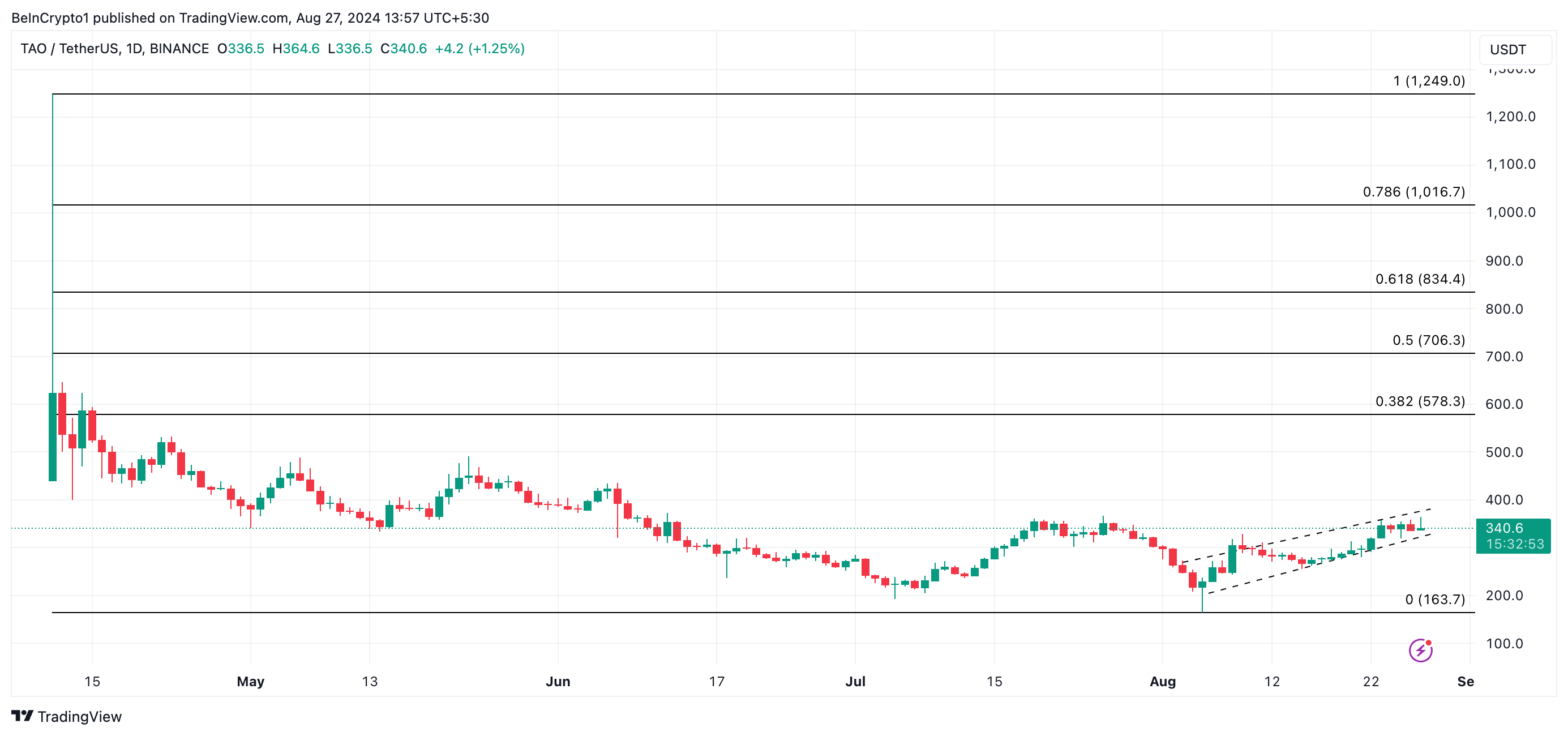
However, if profit-taking activity ensues, TAO will change its course and trend toward support. Should the bulls fail to defend support, the DePin token’s price may trend toward its August 5 low of $163.70.
Livepeer (LPT) Climbs Above Key Moving Averages
LPT, the token powering Livepeer, a decentralized video infrastructure network, has seen its value surge by 28% in the last week. This double-digit gain has pushed the altcoin’s price above both its 20-day exponential moving average (EMA) and 50-day simple moving average (SMA), indicating strong bullish momentum.
LPT’s 20-day EMA, which tracks its average price over the past 20 trading days, currently stands at $13.73. Meanwhile, its 50-day SMA, a longer-term moving average reflecting the average closing price over the past 50 days, is at $13.35.
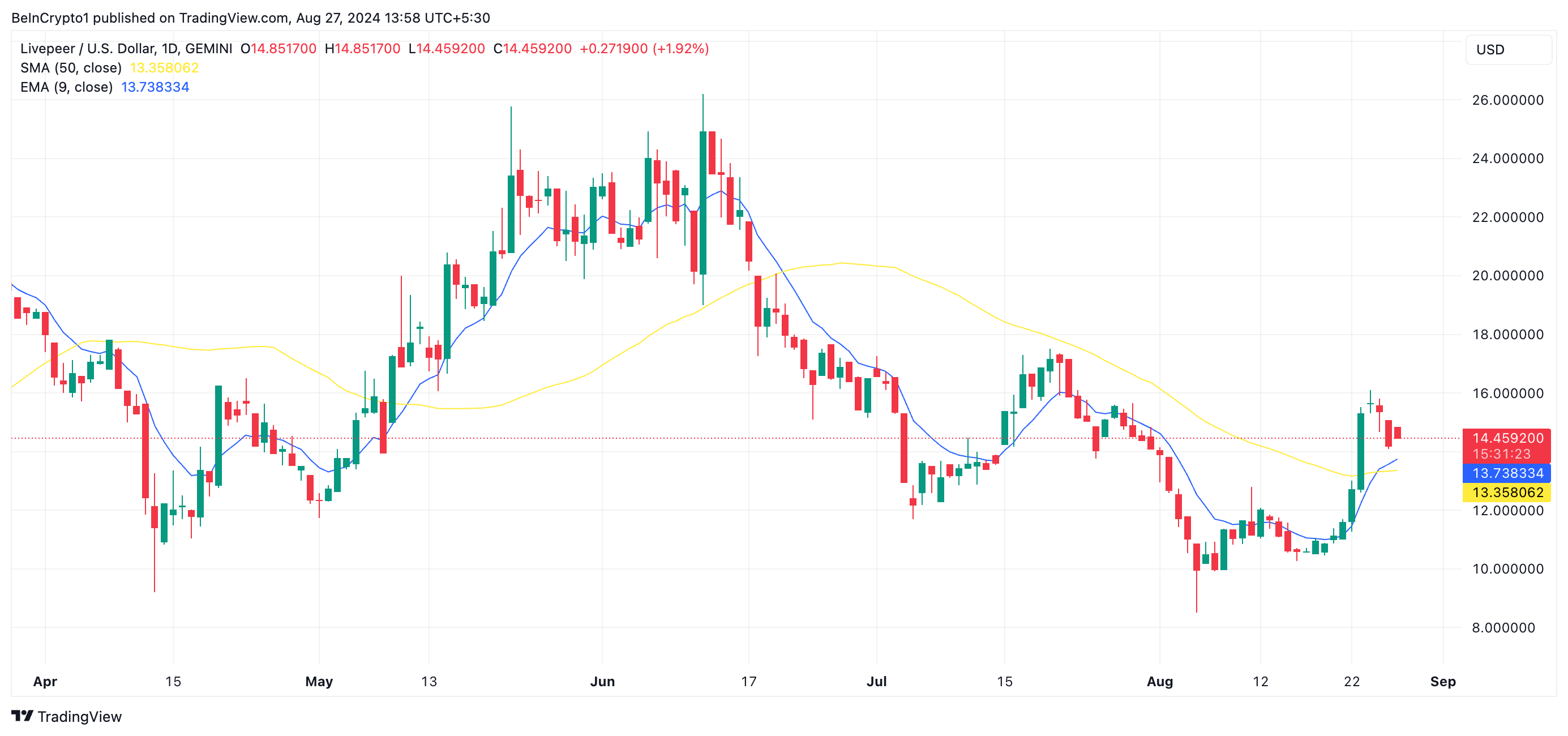
Trading at $14.45, LPT is currently positioned higher than both its 20-day EMA and 50-day SMA. When an asset’s price surpasses these averages, it indicates growing momentum and a likely continuation of the uptrend. Should LPT decline, these levels may act as support, enhancing the chances of a rebound.
Edge Matrix Computing (EMC) Sees Surge in Demand
Edge Matrix Computing (EMC) is a decentralized AI computing power application network, and its EMC token has seen a surge in demand over the past week. Trading at $0.22, EMC has experienced a 163% price increase, making it the DePin asset with the most growth during this period.
The token’s technical setup indicates that this price hike is driven by genuine demand. For example, its Chaikin Money Flow (CMF), which measures the flow of money into and out of an asset, is currently in an uptrend and sits at 0.13, indicating significant liquidity inflow.
Additionally, EMC’s Relative Strength Index (RSI) is at 68.90, suggesting that buying pressure is strong and outweighs sell-offs among market participants.
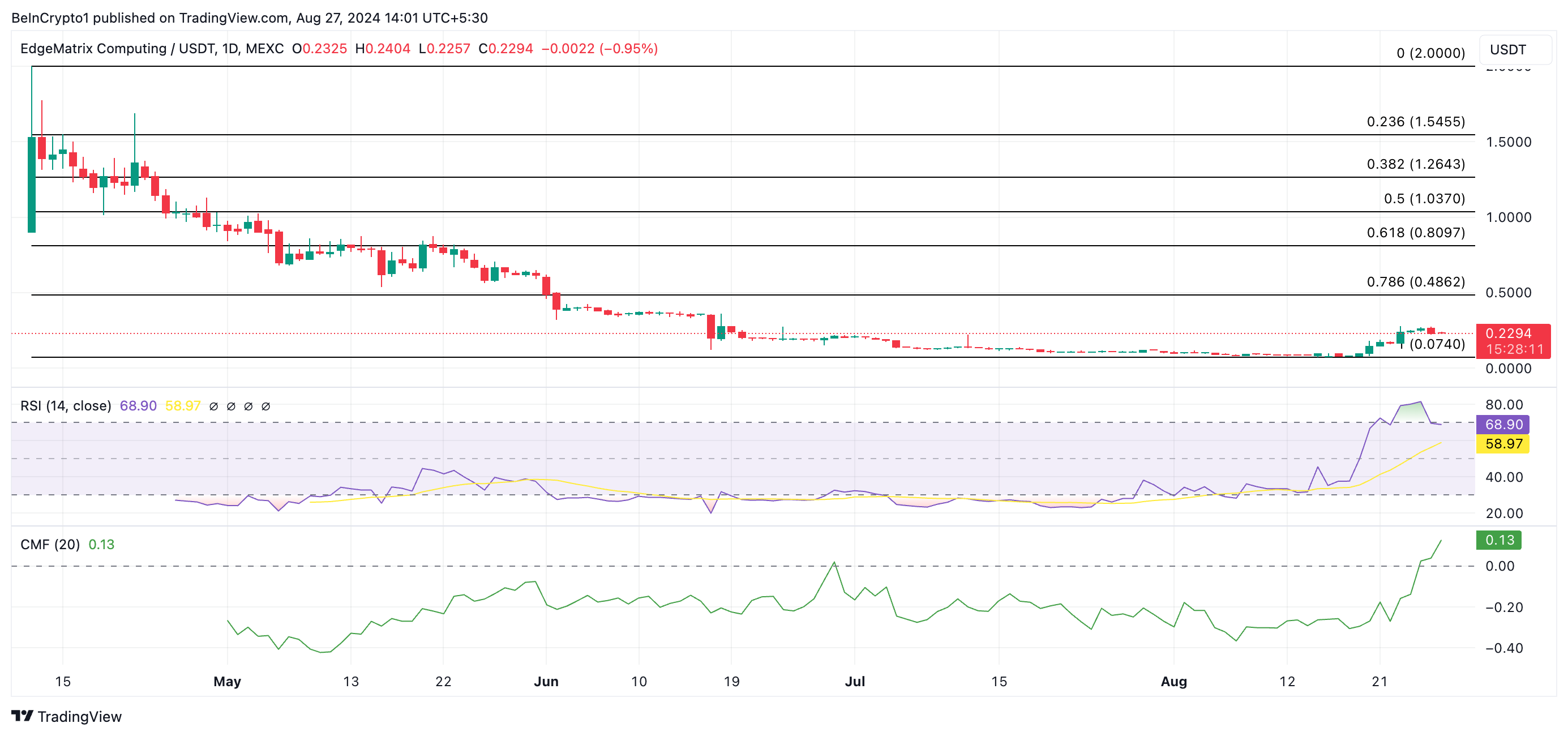
If demand for EMC remains high, its price could rise to $0.48, a level it last reached in May. However, with the RSI approaching the overbought zone (crossing above 70), the token may be nearing a point of buyer exhaustion, potentially leading to a pullback. If this occurs, EMC’s price could drop toward $0.07.
MultiversX (EGLD) Witnesses Spike in Bullish Bias
EGLD has experienced strong bullish sentiment over the past week, resulting in an 11% price increase. Several technical indicators suggest that this bullish trend may continue, potentially leading to further gains.
For instance, the Parabolic Stop and Reverse (SAR) indicator shows dots positioned below EGLD’s current price, signaling an ongoing uptrend. The SAR tracks an asset’s price direction and helps identify potential reversal points; when the dots are below the price, it suggests that the asset is in an upward trend, with the potential for continued growth.
Additionally, EGLD’s Awesome Oscillator (AO) is displaying green histogram bars, which typically indicate a bullish trend or the possibility of an upward reversal.
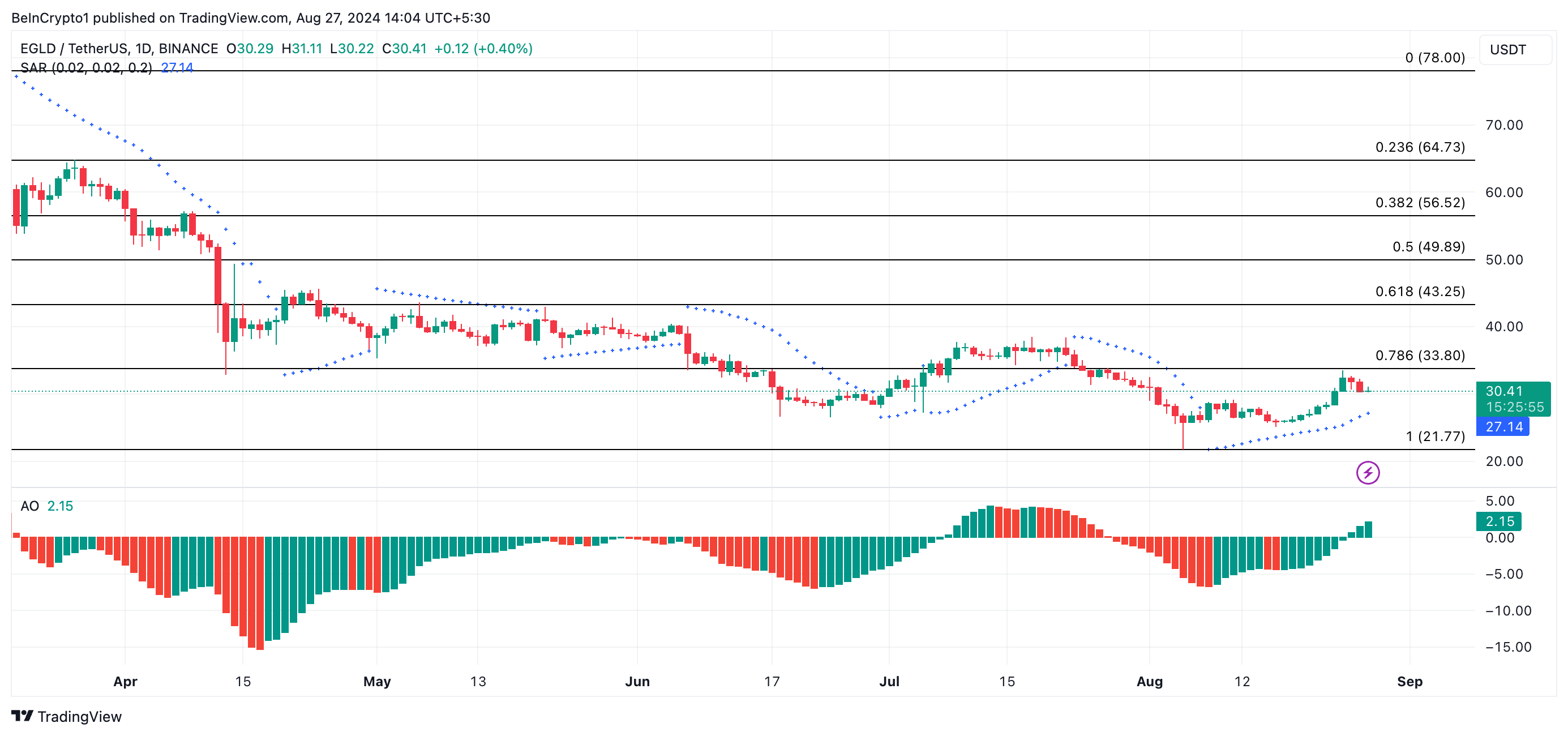
If the current bullish momentum holds, EGLD could target a price of $33.80, representing a 10% increase from its current value of $30.75. However, if market sentiment shifts from bullish to bearish, EGLD’s price could decline to $21.77, its lowest level since the August 5 market drawdown.
Arweave (AR) Shows Strong Accumulation, Trades on an Ascending Trendline
Arweave, a decentralized storage network, has seen its AR token rebound after hitting a six-month low of $16.10 on August 5. The price has since rallied, following an ascending trendline that indicates increased accumulation of AR over the past few weeks. Currently trading at $25.22, AR’s price has surged by 56%.
The Moving Average Convergence Divergence (MACD) indicator supports the potential for an extended rally. At press time, the MACD line (blue) is above the signal line (orange) and is attempting to cross above the zero line.
This suggests that the shorter-term moving average is rising faster than the longer-term one, which traders interpret as a bullish signal to go long and exit short positions.
Read more: Top 10 Web3 Projects That Are Revolutionizing the Industry
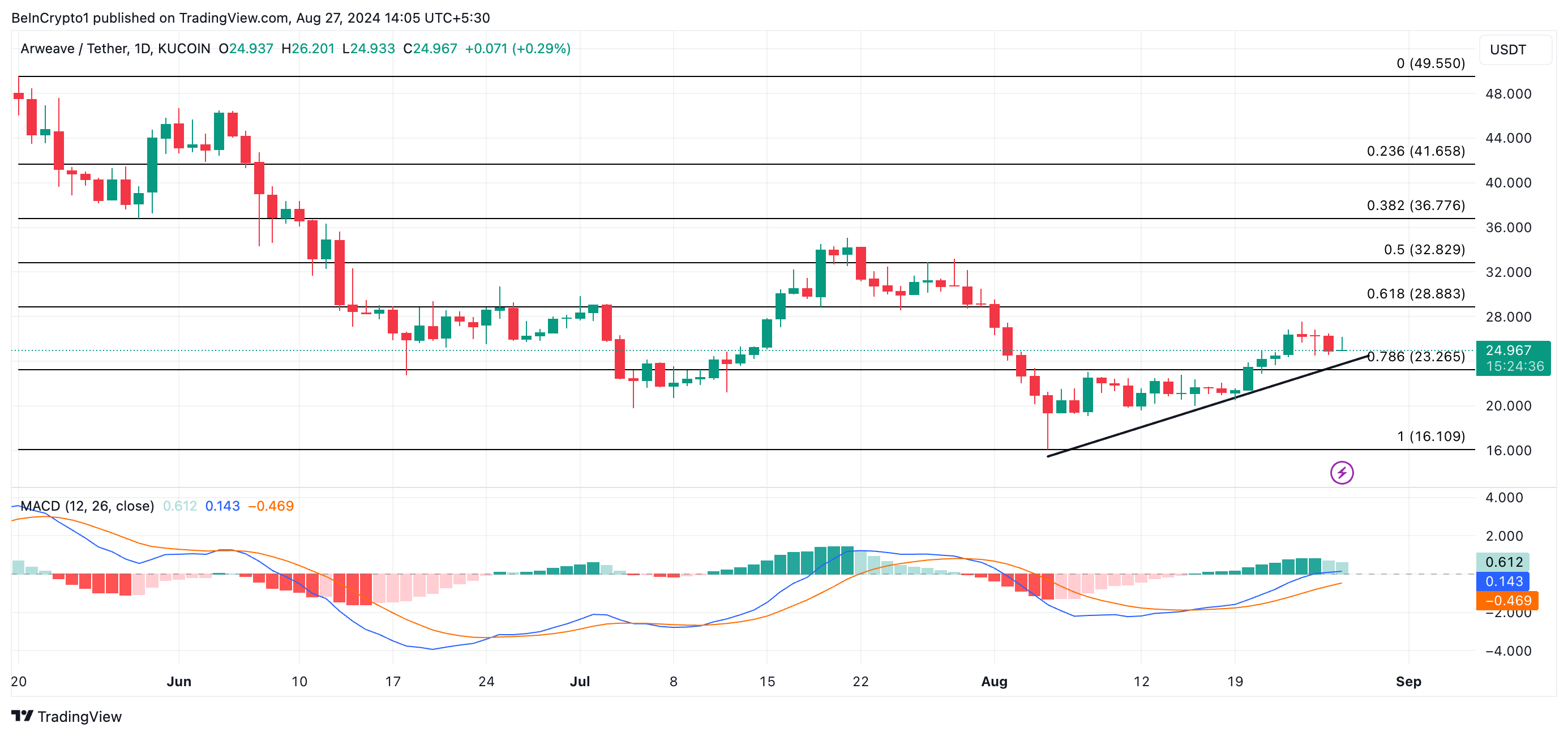
If AR continues its uptrend, its price could reach $28.88. However, if buying pressure weakens, the DePin token may retrace and revisit its August 5 low.
Disclaimer
In line with the Trust Project guidelines, this price analysis article is for informational purposes only and should not be considered financial or investment advice. BeInCrypto is committed to accurate, unbiased reporting, but market conditions are subject to change without notice. Always conduct your own research and consult with a professional before making any financial decisions. Please note that our Terms and Conditions, Privacy Policy, and Disclaimers have been updated.
Market
Analyst Reveals ‘Worst Case Scenario’ With Head And Shoulders Formation
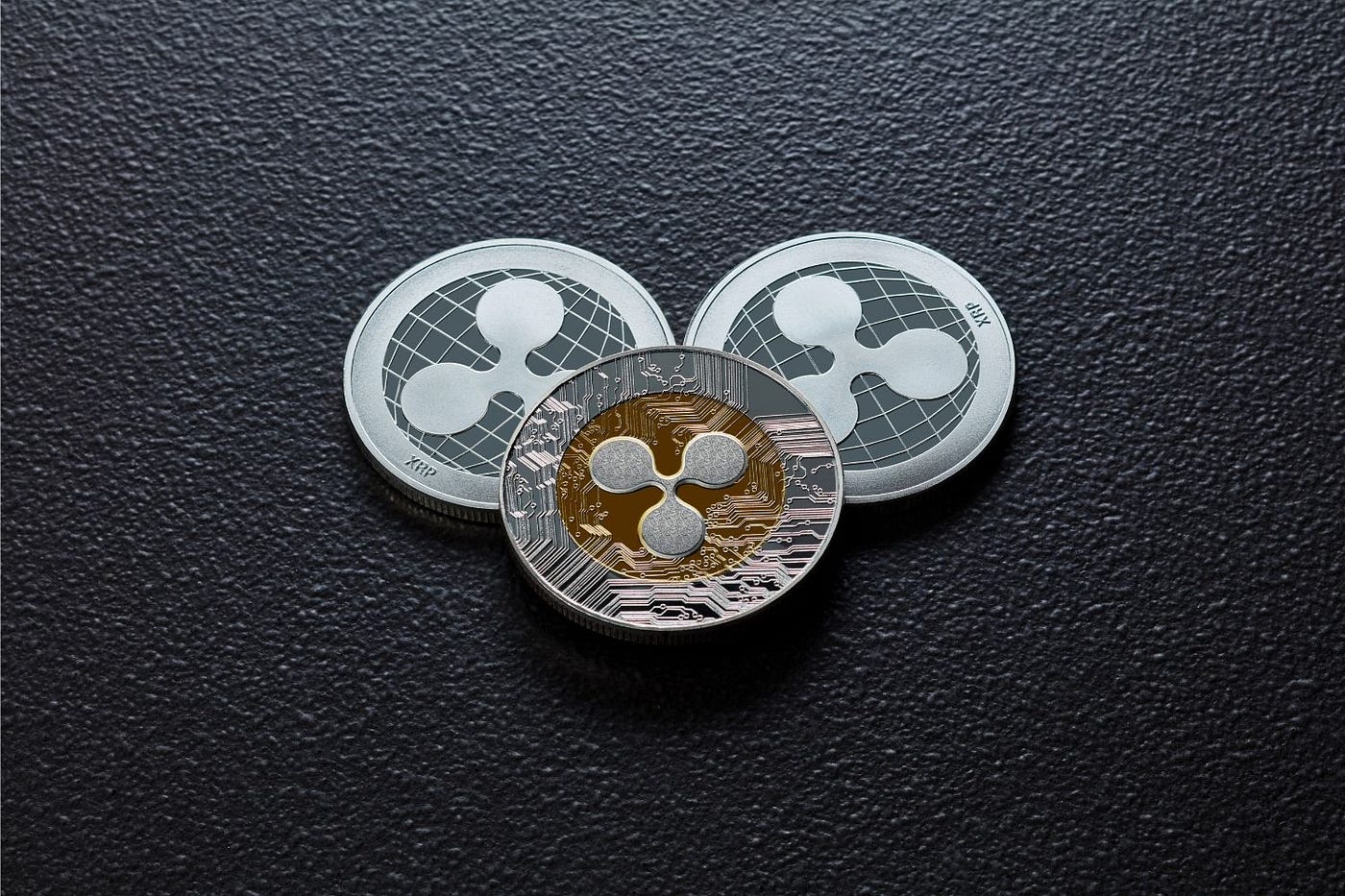
Reason to trust

Strict editorial policy that focuses on accuracy, relevance, and impartiality
Created by industry experts and meticulously reviewed
The highest standards in reporting and publishing
Strict editorial policy that focuses on accuracy, relevance, and impartiality
Morbi pretium leo et nisl aliquam mollis. Quisque arcu lorem, ultricies quis pellentesque nec, ullamcorper eu odio.
Recent XRP price action has sparked a new prediction from a crypto analyst, as a potential Head and Shoulders pattern emerges on the chart. The analyst warns that this technical formation could trigger a significant price correction for XRP, describing this downturn as the worst-case scenario.
Analyst Predicts XRP Price Crash To $1.15
The ‘Charting Guy,’ a pseudonymous crypto analyst on X (formerly Twitter), has unveiled a potential Head and Shoulder pattern formation on the XRP price chart. The analyst has shared insights into the implications of this technical pattern, projecting a potential crash in the XRP price.
Related Reading
As a well-known bearish reversal pattern, the formation of a Head and Shoulder in the XRP price chart suggests a potential shift from an uptrend to a downtrend. Typically, a Head and Shoulder pattern consists of three peaks: the Left Shoulder, Head, and Right Shoulder. However, the Charting Guy has confirmed that XRP’s current pattern formation consists of two right shoulders and one head. Due to this irregularity, the analyst has expressed doubt about the possibility of the pattern playing out.
If the Head and Shoulder pattern eventually takes shape, it could lead to a significant drop in the XRP price, potentially bringing it down to as low as $1.15. This price level aligns with a key Fibonacci Golden Pocket retracement zone between 0.618 – 0.786.
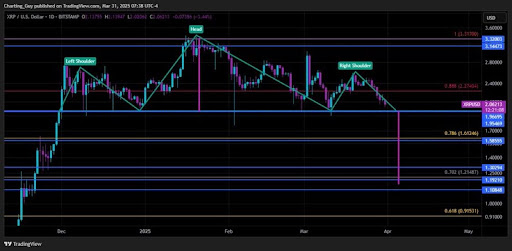
Notably, the analyst has described this projected price crash as the worst-case scenario for XRP. While he believes a bearish move is possible, the analyst is confident that XRP’s broader market structure is bullish.
Moreover, the Charting Guy argues that if XRP does decline to $1.15, it would likely serve as a healthy retracement in an overall bullish trend. He noted that XRP’s price has been holding the $2 level on daily closes, meaning its price action remains strong above support levels. This also indicates the possibility of an uptrend resumption that could yield higher highs and higher lows for XRP.
Key Support And Resistance Levels To Watch
The Charting Guy’s analysis of XRP’s potential Head and Shoulder pattern formation highlights several critical price levels to watch. Since XRP has consistently closed daily candles above $2, the analyst has determined this level as short-term support.
Related Reading
XRP has also been wicking during recent pullbacks in a crucial range between $1.7 and $1.9. As a result, the crypto analyst has revealed that he will be watching this area closely for a potential price bounce.
The Golden Pocket retracement zone, which represents the worst-case scenario for the XRP price, is between $1.15 and $1.30. If XRP experiences a deeper price correction, lower support levels have been marked from $1.19 to $0.91.
For its resistance levels, the Charting Guy has pinpointed $2.27 as a key price point. Additionally, $3.14 – $3.32 has been identified as an upper resistance range where XRP could rally if bullish momentum resumes.
Featured image from Medium, chart from Tradingview.com
Market
BeInCrypto US Morning Briefing: Standard Chartered and Bitcoin


Welcome to the US Morning Crypto Briefing—your essential rundown of the most important developments in crypto for the day ahead.
Grab a coffee to see how Standard Chartered sees early signs of institutional investors turning to Bitcoin as a hedge against equity market volatility, just as traders gear up for a potentially volatile week driven by tariff news. At the same time, Coinbase wraps up its worst quarter since the FTX collapse, and U.S. regulators inch closer to unified stablecoin legislation.
Standard Chartered Sees Signs of Bitcoin Starting to Be Used as Hedge Against Market Volatility
Geoff Kendrick, Head of Digital Assets Research at Standard Chartered, sees signs that institutional traders are starting to use Bitcoin as a hedge against equity market volatility.
In a recent exclusive interview with BeInCrypto, Kendrick highlighted that this trend is already underway, with investors seeking alternatives to traditional instruments. “This is happening already,” Kendrick stated. “Investors used to use FX, specifically AUD, for this purpose due to its highly liquid and positive correlation to stocks, but now I think Bitcoin is being used because it is also highly liquid and trades 24/7.”
Additionally, in an investor note from late March, Kendrick expanded on Bitcoin’s evolving role in investment portfolios, suggesting that over time, Bitcoin may serve multiple purposes—both as a hedge against traditional financial market fluctuations and as a proxy for tech stocks.
He pointed out signs that markets could anticipating a less severe tariff announcement from the U.S. on April 2. “Given this has been the worst quarter for the Nasdaq since Q2 2022, there should be a degree of portfolio rebalancing (buying) that needs to take place,” Kendrick added.
As of April 1, 2025, Bitcoin has shown resilience amid broader market uncertainties. The cryptocurrency is up approximately 3.32%, trading at $84,282. This uptick comes alongside an overall increase in the global cryptocurrency market capitalization. In contrast, U.S. stock futures, including Dow Futures, S&P 500 Futures, and Nasdaq Futures, are all trending lower in pre-market trading, reflecting investor caution ahead of the anticipated tariff announcements.
Bitcoin Options Heat Up Before Trump’s “Liberation Day”
FalconXCrypto Global Co-Head of Markets, Joshua Lim, noted that in anticipation of Wednesday’s Trump-tariff “Liberation Day,” crypto funds are actively purchasing Bitcoin options at two key strike prices: $75,000 on the downside to hedge against potential losses and $90,000 on the upside to capitalize on a price surge.
Lim highlighted that the options market is pricing in a potential 4% move in Bitcoin’s price during the event. “The implied event move embedded in Bitcoin options is around 4% for the 2 April event,” he told BeInCrypto.
He also pointed out that traders are likely to keep buying put options in the short term as a protective measure, maintaining a high options cost premium. “We believe the front of the options curve will hold its premium as traders continue to hedge their portfolios or replace spot positions with limited-loss option positions,” Lim added.
Additionally, he noted a 4-point increase in the VIX, signaling that investors expect heightened volatility in the coming days and are turning to options to manage risk or capitalize on price swings. “US equities are also showing a bid in options, with the front-month VIX up 4 points to 22v from last week,” he said.
Crypto Stocks Slide: Coinbase Suffers Worst Quarter Since FTX Collapse
Coinbase is closing out its roughest quarter since the FTX collapse, with its stock tumbling over 30% since January. While it dipped nearly 1% in early U.S. pre-market trading on Monday, the stock managed to claw back losses and is now up around 1%.
Other crypto-linked companies are also feeling the pressure. Galaxy Digital Holdings has dropped over 8% in pre-market trading, while mining firms Riot Platforms and Core Scientific are only barely staying afloat, each gaining less than 0.5%.
Meanwhile, CoreWeave, which pivoted from Bitcoin mining to AI infrastructure, is struggling after a disappointing IPO. Initially aiming for a $2.7 billion raise, the company had to settle for $1.5 billion, slashing its offer price from the $47–55 range to $40 per share. Since going public last Friday, its shares are down 6.8%, with a 7.3% drop recorded in the last 24 hours.
Byte-Sized Alpha
– Today’s JOLTS report, a key gauge of U.S. job openings, could sway Bitcoin—strong data may boost the dollar and hurt crypto, while a sharp decline could fuel rate-cut hopes and lift risk assets.
– Bitcoin is off to its worst quarterly start since 2018, dropping nearly 12% in Q1 2025—but growing whale accumulation, falling exchange supply, and signs of consolidation hint at a potential rebound ahead.
– Crypto scams are on the rise, with fake Gemini bankruptcy emails and a Coinbase employee breach fueling phishing attacks
– OKX has appointed former NYDFS Superintendent Linda Lacewell as Chief Legal Officer, a move aimed at bolstering its regulatory credibility as the exchange accelerates global expansion into regions like Europe and the UAE.
– A unified U.S. stablecoin regulation could soon become reality, as the STABLE and GENIUS Acts differ by only 20% and enjoy strong bipartisan support alongside SEC and CFTC involvement.
– A push for expanded crypto oversight is underway as incoming CFTC Chair Brian Quintenz meets with Senator Chuck Grassley to discuss regulating the crypto spot market.
Disclaimer
In line with the Trust Project guidelines, this price analysis article is for informational purposes only and should not be considered financial or investment advice. BeInCrypto is committed to accurate, unbiased reporting, but market conditions are subject to change without notice. Always conduct your own research and consult with a professional before making any financial decisions. Please note that our Terms and Conditions, Privacy Policy, and Disclaimers have been updated.
Market
SUI Price Stalls After Major $147 Million Token Unlock

SUI enters a critical phase today as a $147 million token unlock threatens to inject selling pressure into a market already testing key resistance levels. Despite a sharp rebound in momentum—evident in the RSI’s surge from oversold territory—SUI failed to break above the crucial 60 mark, signaling buyer hesitation.
The Ichimoku Cloud shows price action pressing against the cloud’s edge, but lacking the conviction needed for a clear breakout. With a possible golden cross forming on the EMA lines, bulls still have a chance—if they can overcome resistance at $2.50 and avoid being dragged down by post-unlock volatility.
SUI RSI Surged Since Yesterday But Failed To Break Above 60
SUI’s Relative Strength Index (RSI) has jumped sharply to 58.94, up from 29.38 just a day ago, reflecting a strong shift in short-term momentum.
The RSI is a momentum oscillator that measures the speed and magnitude of recent price changes. It typically ranges from 0 to 100. Readings below 30 suggest an asset may be oversold, while levels above 70 indicate it may be overbought.
The rapid rise in SUI’s RSI suggests buyers have stepped in aggressively after a period of heavy selling.

However, despite the impressive rebound, SUI’s RSI briefly approached but failed to break above the 60 threshold earlier today.
This level often acts as a short-term resistance during recovery phases, and the rejection may indicate lingering hesitation among buyers or profit-taking after the surge.
While the RSI nearing 60 is encouraging, a decisive move above it would be needed to confirm a breakout. For now, SUI appears to be in a recovery mode. However, the inability to push past 60 highlights that bulls are not fully in control just yet.
Ichimoku Cloud Shows Lack Of Strong Upward Momentum
SUI blockchain Ichimoku Cloud chart shows a potential breakout attempt, as the price has surged upward and is now hovering right at the edge of the Kumo (cloud).
This movement suggests bullish momentum is trying to build. However, the resistance provided by the thick, red cloud ahead could make it difficult for SUI to sustain the uptrend without stronger confirmation.
The Tenkan-sen (blue line) is starting to rise and has crossed above the Kijun-sen (red line), which is a bullish signal. However, the price still needs to clearly break and hold above the cloud to flip the overall trend from bearish to bullish.
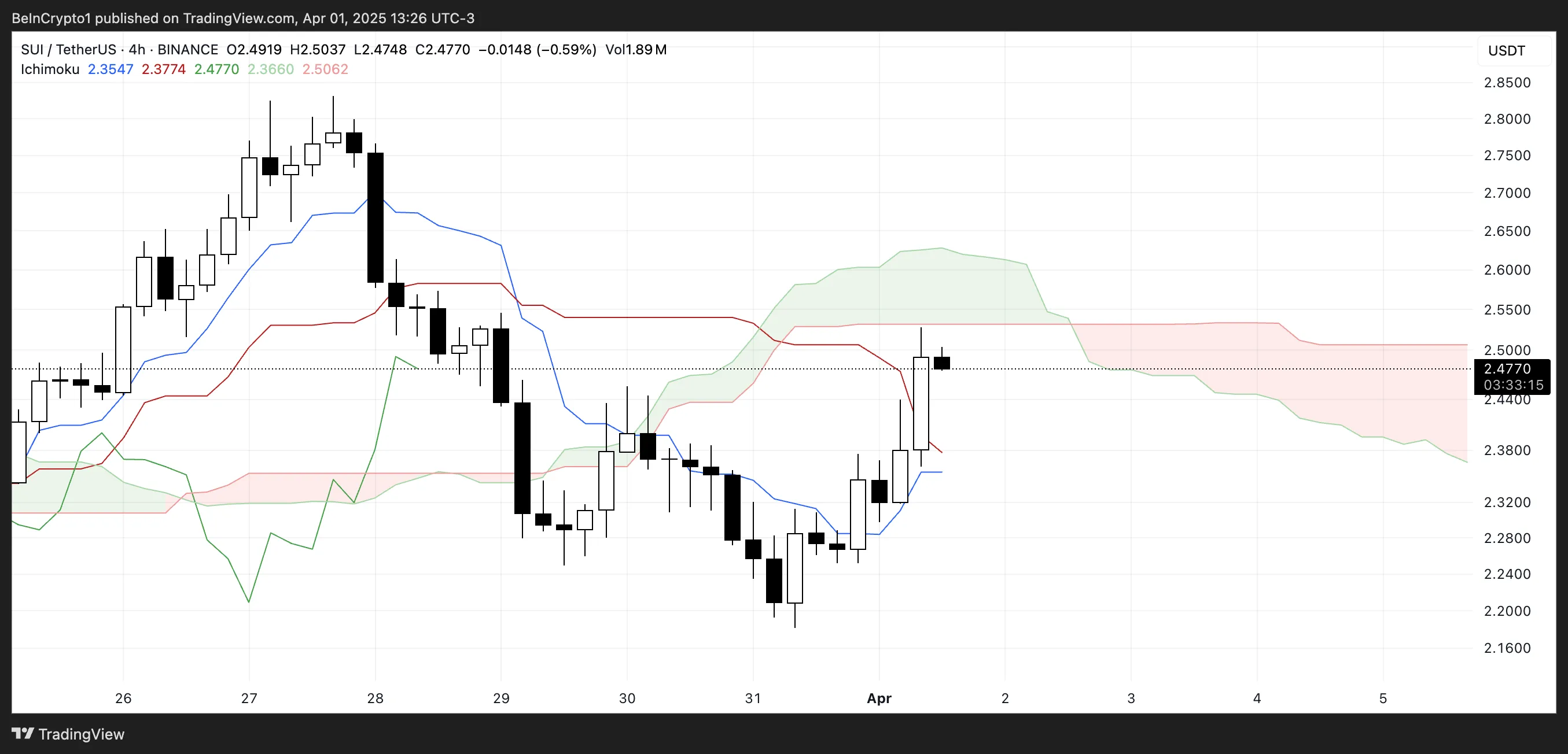
For now, the cloud remains bearish and flat, indicating possible resistance and a lack of strong upward conviction.
The current position suggests that SUI is at a key decision point—either break through the cloud to initiate a trend reversal or get rejected and slip back into the previous downtrend range.
If buyers can sustain the pressure and push the price above the upper cloud boundary, it could trigger a stronger rally. But without increased volume and broader market support, the price risks getting stuck in consolidation or turning back downward.
Will SUI Rise Back To $2.80?
SUI’s EMA lines are tightening and showing signs of a potential golden cross. That happens when a short-term moving average crosses above a longer-term one—a classic bullish signal that often precedes upward momentum.
However, the price is currently grappling with a key resistance near the $2.50 level.
If bulls manage to break through this level, it could open the path for a move toward $2.83.
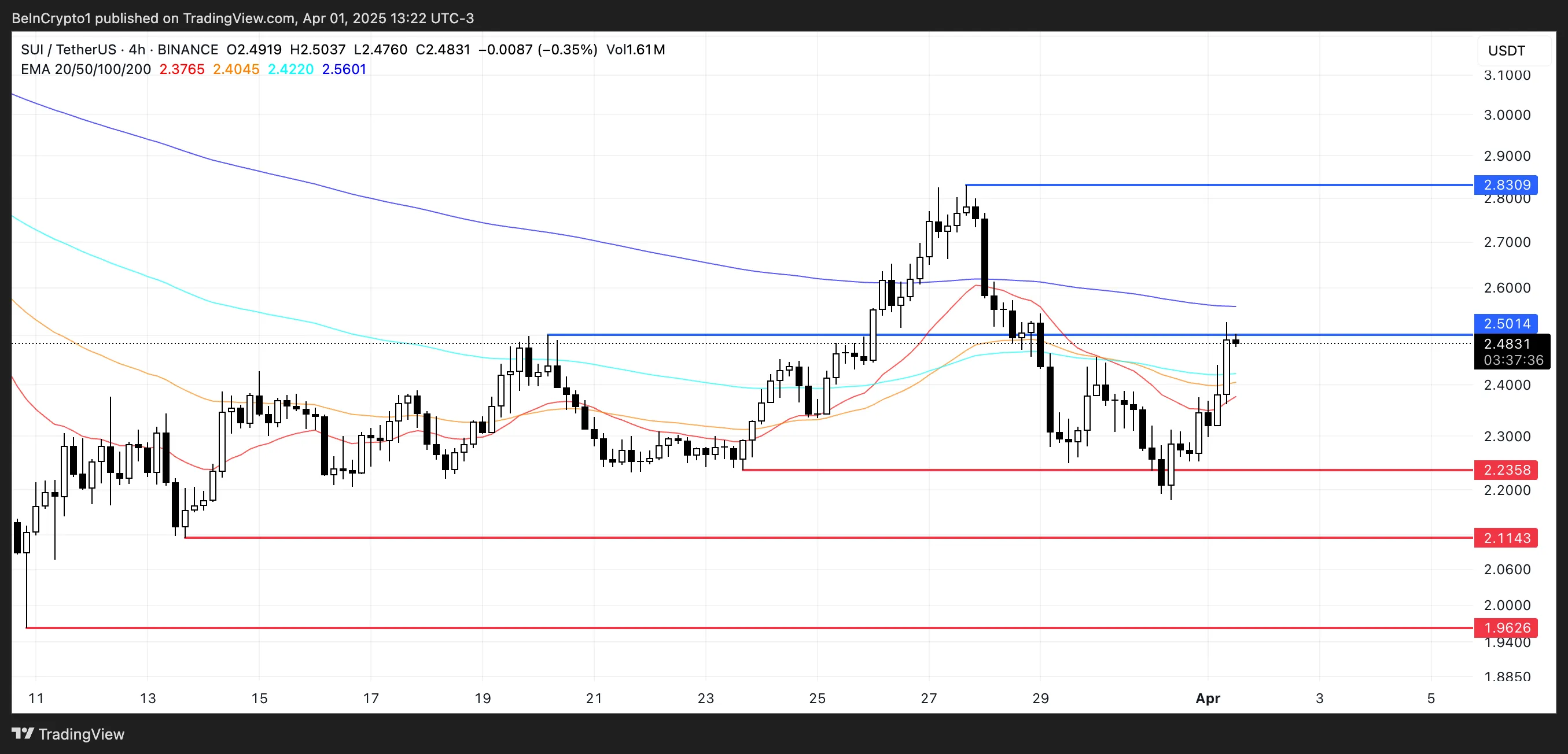
That said, downside risks remain, particularly with today’s $147 million token unlock, which could introduce significant selling pressure. If that selling materializes, SUI price could fall back to test the support at $2.23.
A breakdown below that level would likely shift momentum back in favor of bears. This would expose deeper supports at $2.11 and $1.96.
Disclaimer
In line with the Trust Project guidelines, this price analysis article is for informational purposes only and should not be considered financial or investment advice. BeInCrypto is committed to accurate, unbiased reporting, but market conditions are subject to change without notice. Always conduct your own research and consult with a professional before making any financial decisions. Please note that our Terms and Conditions, Privacy Policy, and Disclaimers have been updated.
-

 Market20 hours ago
Market20 hours agoCFTC’s Crypto Market Overhaul Under New Chair Brian Quintenz
-

 Altcoin13 hours ago
Altcoin13 hours agoWill XRP, SOL, ADA Make the List?
-
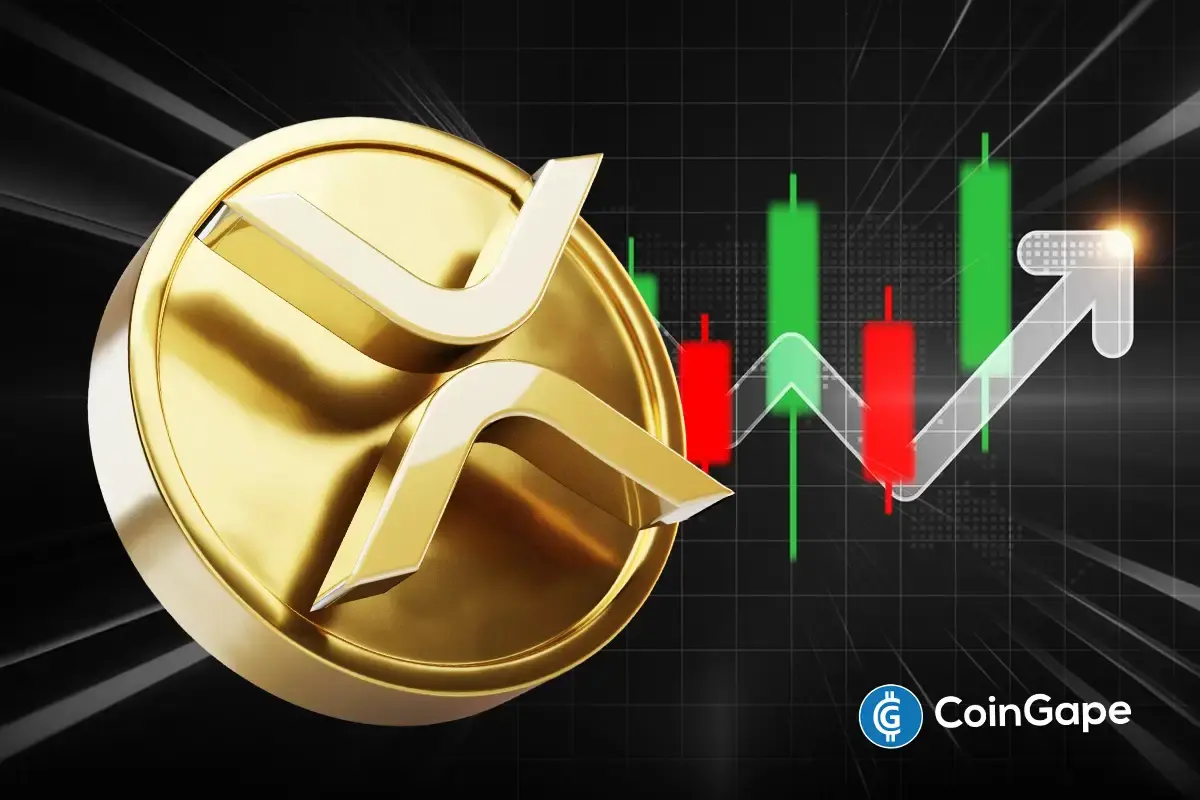
 Altcoin20 hours ago
Altcoin20 hours agoA Make or Break Situation As Ripple Crypto Flirts Around $2
-

 Market19 hours ago
Market19 hours agoXRP Bulls Fight Back—Is a Major Move Coming?
-

 Market18 hours ago
Market18 hours agoIs CZ’s April Fool’s Joke a Crypto Reality or Just Fun?
-

 Market17 hours ago
Market17 hours agoBitcoin Price Battles Key Hurdles—Is a Breakout Still Possible?
-

 Bitcoin15 hours ago
Bitcoin15 hours agoBig Bitcoin Buy Coming? Saylor Drops a Hint as Strategy Shifts
-

 Market22 hours ago
Market22 hours agoEthereum Price Faces a Tough Test—Can It Clear the Hurdle?


















